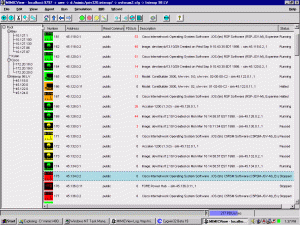Simple Network Management Protocol or SNMP is an Internet Standard Protocol for managing tools on IP networks. Devices that generally support SNMP comprise of switches, routers, servers, printers, workstations and modem racks. SNMP is mostly used in network management systems to scrutinize network-connected devices for states that call for administrative consideration. SNMP is a part of the IPS (Internet Protocol Suite) as classified by the IETF (Internet Engineering Task Force). Simple Network Management Protocol provides managing data in the form of variables on the controlled systems, which explain the system configuration.
SNMP standards:
Introduced in the 80s, the original edition of SNMP, SNMPv1, lack some crucial functionality & only worked with IP or TCP networks. An enhanced version for SNMP, SNMPv2 was introduced in 1992. Even though Simple Network Management Protocol had many security issues, several networks remained on the SNMPv1whilst others implemented SNMPv2. Recently, the SNMPv3 version was introduced to address those issues with SNMPv1 & SNMPv2 and allowed managers to move to one regular SNMP standard.
Overview & basic concepts of SNMP:

In general SNMP uses, one or more administrative computer systems, known as managers, have the responsibility of monitoring or controlling a group of devices or hosts on a computer network. All managed systems execute a software module called an agent which provides information using SNMP to the manager. SNMP agents assign management data on the controlled systems as variables. Also, the protocol allows active management responsibilities, such as revising & employing a new configuration via remote adjustment of these variables. The variables available via SNMP are prearranged in ranking. These ranking, and other meta data are included in MIBs (Management Information Bases).
An SNMP-controlled network comprises of three crucial elements:
• Agent software that runs on controlled devices
• NMS or Network management station application that runs on the manager
MIMIC SNMP simulator:
MIMIC SNMP Simulator creates a network of up to 100,000 SNMP-manageable devices. You can create any SNMP-based device with any number of public or private MIBs to run a large variety of device configurations with your SNMP management application. It lets you generate thousands of traps to simulate disaster scenarios.







